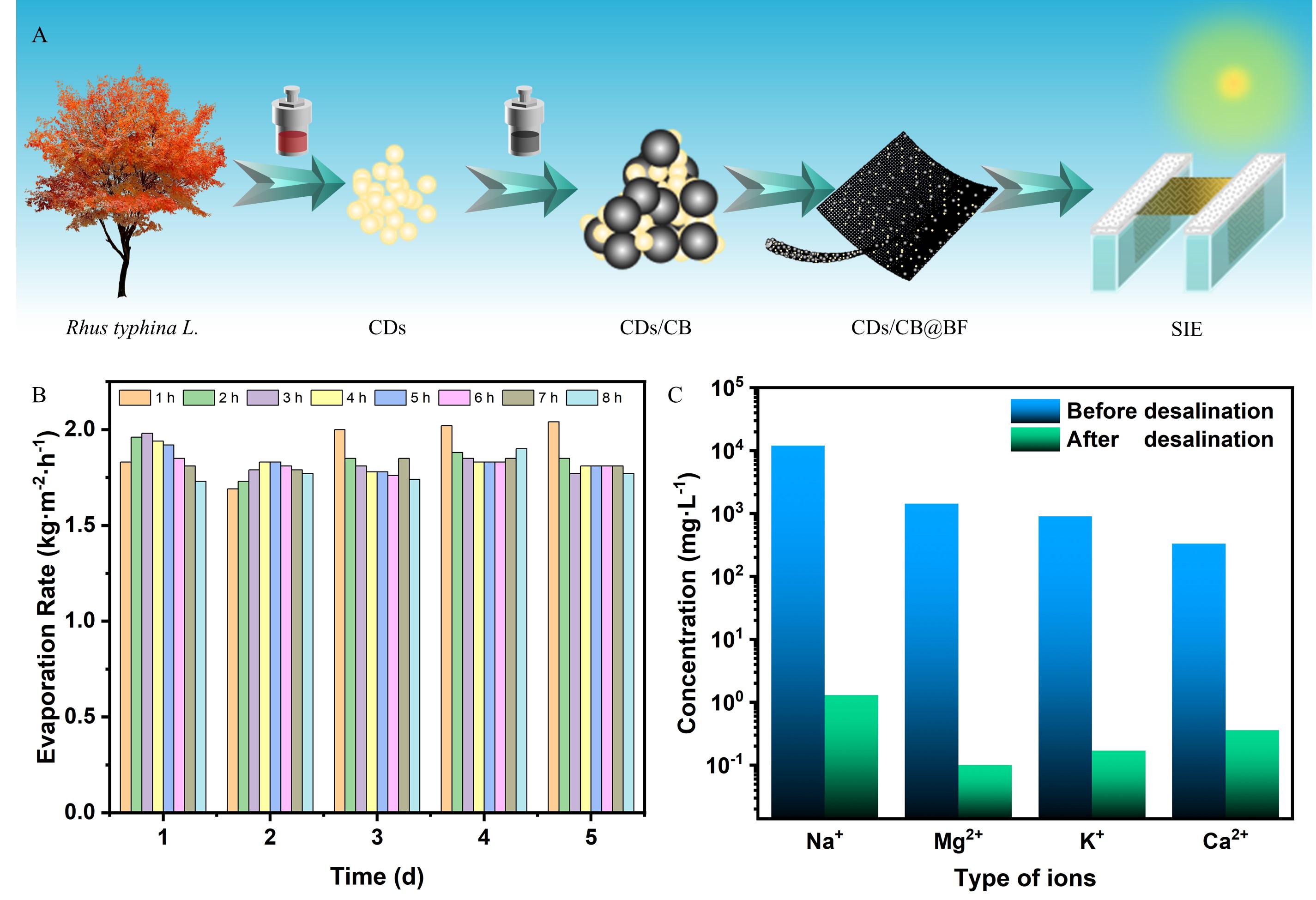
As global freshwater resources become increasingly scarce, the development of efficient, economical, and environmentally friendly solar-driven desalination technologies has become critical to addressing water resource crises.
Traditional desalination methods, such as membrane distillation and mechanical vapor compression, encounter limitations in large-scale applications due to their complex equipment, high capital costs, and substantial energy consumption. In recent years, solar interfacial evaporation (SIE) technology has emerged as a promising research area thanks to its high efficiency, low cost, and environmental friendliness. Simultaneously, invasive plant species have encroached upon approximately 13 million hectares of agricultural land worldwide, posing challenges due to their competitive dominance and ecological destructiveness. Conventional management strategies, including physical and chemical methods, are often costly and risk causing secondary environmental pollution. Therefore, effectively controlling and utilizing invasive plants has become an urgent concern.
To tackle these issues, a research team led by Prof. Abudukeremu Kadier and Prof. MA Pengcheng from the Xinjiang Technical Institute of Physics and Chemistry of the Chinese Academy of Sciences has made progress in creating SIE materials based on carbon dots (CDs) derived from invasive plants. This study was published in Separation and Purification Technology.
The researchers utilized leaves from the invasive species Rhus typhina L. as a carbon source, synthesizing CDs through a hydrothermal process. These CDs were then combined with carbon black (CB) and deposited onto basalt fabric (BF) using an immersion coating method, resulting in the successful fabrication of a novel two-dimensional photothermal fabric (CDs/CB@BF). Experimental results demonstrated that the evaporator achieved an evaporation rate of 2.05 kg·m²·h⁻¹ and a photothermal conversion efficiency of 95.72% under 1 sun irradiation. The material's surface, enriched with hydrophilic functional groups such as hydroxyl and carboxyl, significantly enhanced water molecule adsorption and transport efficiency while reducing evaporation enthalpy to 1681 J·g⁻¹.
Additionally, the CDs/CB@BF evaporator exhibited excellent physicochemical stability during cyclic tests, with no significant decline in evaporation rate after multiple cycles. It maintained stable performance in wastewater with pH values ranging from 3 to 12. In simulated seawater (3.5 wt% salinity), the material retained an evaporation rate of 1.81 kg·m²·h⁻¹, with treated water's ion concentrations drastically reduced to meet World Health Organization drinking water standards.
Notably, the material effectively desalinated seawater and purified complex wastewater, including oil-in-water emulsions and dye-contaminated solutions. An economic analysis revealed a low fabrication cost of $20.75 per square meter for CDs/CB@BF, with an efficiency-to-cost ratio of 87.23 g·h⁻¹·$⁻¹, demonstrating significant economic feasibility.
This study presents a novel strategy for utilizing invasive plants and advances the development of high-performance, cost-effective, and eco-friendly photothermal materials for solar-driven desalination.
This work was supported by the Natural Science Foundation of Xinjiang Uygur Autonomous Region, the Department of Foreign Expert Services of the Ministry of Science and Technology of China, and others.

Fig: (A) Fabrication of the CDs/CB@BF photothermal fabrics; (B) CDs/CB@BF long-term stability test of photothermal fabrics; (C) Comparison of ion concentrations after desalination. (Image by the research group)

86-10-68597521 (day)
86-10-68597289 (night)

52 Sanlihe Rd., Xicheng District,
Beijing, China (100864)

